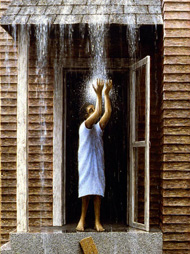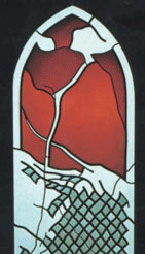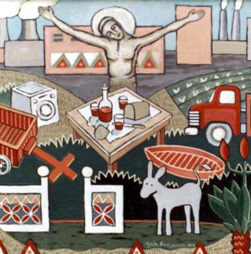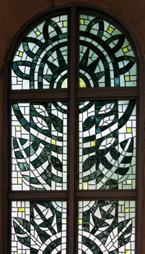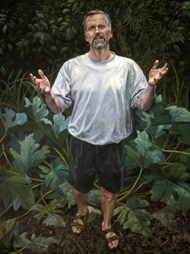Mary Oliver & Pauline Baynes
Mary Oliver: Making the House Ready for the Lord
and
Pauline Baynes: St Francis
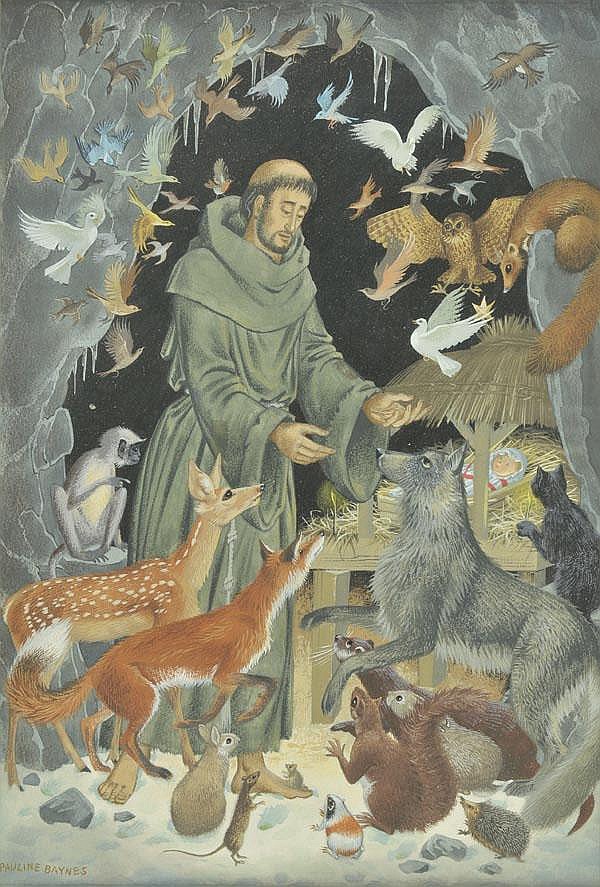
Making the House Ready for the Lord
by Mary Oliver
Dear Lord, I have swept and I have washed but
still nothing is as shining as it should be
for you. Under the sink, for example, is an
uproar of mice, it is the season of their
many children. What shall I do? And under the eaves
and through the walls the squirrels
have gnawed their ragged entrances, but it is the season
when they need shelter, so what shall I do? And
the raccoon limps into the kitchen and opens the cupboard
while the dog snores, the cat hugs the pillow;
what shall I do? Beautiful is the new snow falling
in the yard and the fox who is staring boldly
up the path, to the door. And still I believe you will
come, Lord: you will, when I speak to the fox,
the sparrow, the lost dog, the shivering sea-goose, know
that really I am speaking to you whenever I say,
as I do all morning and afternoon: Come in, Come in.
*******
Mary Oliver (b. 1935) is an American poet who has won the National Book Award and the Pulitzer Prize. Oliver's poetry is grounded in memories of Ohio and her adopted home of New England. Influenced by both Walt Whitman and Henry David Thoreau, she is known for her clear and poignant observances of the natural world. Her poems are filled with imagery from her daily walks near her home: shore birds, water snakes, the phases of the moon and humpback whales. Oliver has been compared to Emily Dickinson, with whom she shares an affinity for solitude and inner monologues. “Mary Oliver’s poetry is an excellent antidote for the excesses of civilization," wrote one reviewer for the Harvard Review, “for too much flurry and inattention, and the baroque conventions of our social and professional lives. She is a poet of wisdom and generosity whose vision allows us to look intimately at a world not of our making.” http://maryoliver.beacon.org/
Pauline Baynes (1922-2008) was an English illustrator whose work encompassed more than 100 books, notably several by C. S. Lewis and J. R. R. Tolkien. She was born in Hove, Sussex. For a few years she was raised in India, where her father was commissioner in Agra, but she and her elder sister were sent back to England for their schooling. She spent much of her childhood in Farnham, studying at the Farnham School of Art (now the University for the Creative Arts and eventually attended the Slade School of Fine Art, but after a year there she volunteered to work for the Ministry of Defence, where she made demonstration models for instruction courses. This work did not last long. She was soon transferred to a map-making department, where she acquired skills that she later employed when she drew maps of Narnia for Lewis and of Middle-earth for Tolkien. Baynes is probably best known for her covers and interior illustrations for The Chronicles of Narnia by C. S. Lewis, seven books published, one volume a year, from 1950 to 1956. When she began work on the Narnia books she was already the chosen illustrator of Lewis's friend and colleague J. R. R. Tolkien. Eventually drawings by Baynes appeared not only in Farmer Giles of Ham, but also in The Adventures of Tom Bombadil, Smith of Wootton Major, Tree and Leaf and (after the author's death) the poem Bilbo's Last Song, which appeared as a poster in 1974 and as a book in 1990. Baynes also painted the covers for two British paperback editions of The Lord of the Rings (in one volume in 1973 and in three volumes in 1981) and produced illustrated poster versions of the maps from The Lord of the Rings and The Hobbit as well as the Tolkien-related A Map of Middle-earth.
